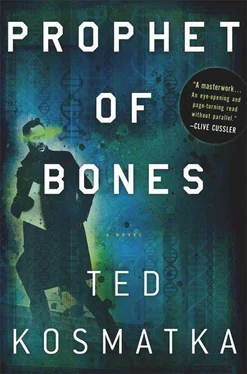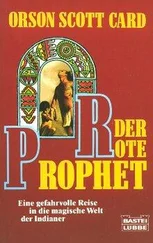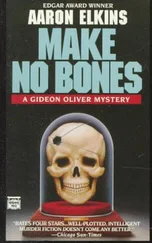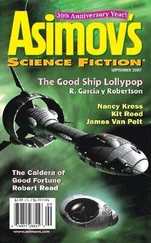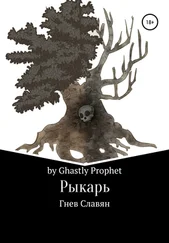“Thanks,” he told her.
“You’re as big as him. Why’d you let him do that?”
Paul shrugged. “He’s older.”
“I’m Rebecca, and this is my cousin Brian.”
“Paul.”
Rebecca turned and looked toward the bleachers. “We should go,” she said. Josh was talking to the bleacher group now, glancing meaningfully in their direction.
Paul followed Rebecca and her cousin out of the park, riding his bike slowly as they walked beside him. The cousin, it turned out, was a quiet, gap-toothed boy of seven who was staying with Rebecca’s family for summer break. Paul had no cousins, and he felt a momentary pang of jealousy. He had no family other than his parents.
When they arrived at her house, he was shocked to find how close she lived. On the other side of the street, one block down.
“We’re practically neighbors,” he told her.
Paul rode his bike up her driveway. The screen door squeaked as she opened it, but she didn’t step inside.
“Those papers,” she said. “What were you drawing?”
For a moment, Paul wasn’t sure how to answer. She must have sensed the hesitation. “You don’t have to say if you don’t want to,” she added.
Her saying that made it possible. So he told her.
“What do you mean, ‘cages’?” she asked. She let the screen door close and sat on the stoop.
He pulled the pad from his paper-route bag. “Here,” he said.
Rebecca took the papers, and her cousin leaned close.
“Construction plans, I guess you’d call them,” Paul said.
She flipped to the next sheet. This one showed his largest cage, drawn out in intricate detail.
“You built this?”
“Yeah. It wasn’t that hard.”
“It looks hard to me. Where is it?”
“In the attic over my garage.”
“Can we see?”
Paul glanced in the direction of his house. “No, I better not.”
Rebecca flipped the page and studied the final drawing carefully. “It must have taken you a long time to put all this together.”
“Months.”
“What are they for? I mean, if these are cages, what’s supposed to go inside?”
“Mice.”
She nodded to herself. “Mice,” she repeated under her breath, as if it made perfect sense. “Where’d you get the stuff? All the wood and nails.”
Paul shrugged. “Here and there. Just scraps, mostly. Other stuff I had to buy.”
The little cousin finally spoke: “My parents don’t let me have pets.”
“Neither do mine,” Paul said. “But anyway, the mice aren’t pets.”
“Then what are they?” the boy asked. He stared over his cousin’s shoulder at the drawings.
“A project,” Paul said.
“What kind of project?”
Paul looked at the graph paper. “I’m still working on that.”
* * *
The bell rang at two thirty-five.
By two forty-nine, school bus No. 32 was freighted with its raucous cargo and pulling out of the parking lot, headed for the highway and points south and east.
Paul sat near the back and stared out the window, watching the Grand Kankakee Marsh scroll by. Around him, the other kids talked and laughed, but only Paul sat silently, fidgeting with the large blue textbook on his lap, waiting for the road to smooth out so that he could read. As they crossed the bridge, he finally opened his life sciences book.
Today Mr. Slocam had gone over the study guide for the test.
Figure 73 showed two ellipses graphed like a crooked half-smile between an x- and a y-axis. The caption explained that the first slope represented the number of daughter atoms. The second slope represented the parent atoms. The point of intersection of the two slopes was the element’s half-life.
“You will need to know this for the test,” the study guide declared in bold heading, followed by a series of bullet-pointed facts.
The study guides were always like this.
Need to know this for the test. The common refrain of the public schools, where academic bulimia was the order of the day—and tests simple exercises in regurgitation. Paul knew the drill.
The bus made several stops before finally pulling to rest in front of his house. Paul climbed out.
His father was out of town again, at another scientific conference, so dinner that evening was a quiet undertaking. Later that night he went up to his room and copied his study guide onto a series of flash cards. Just before bed, he found his mother in the kitchen. “Will you quiz me?”
“Of course.” His mother’s doll face shattered into a smile.
They sat at the dining room table, and his mother flipped the first card, on which was drawn two crooked lines on an x- and y-axis. “Describe the point of intersection,” she said.
“It’s an element’s half-life.”
“Good,” she said, flipping to the next card. “When was radiometric dating invented?”
“In 1906, but the results were rejected for years.”
“Rejected by whom?”
“By evolutionists.”
“Good.” She flipped to the next card. “In what year did Darwin write On the Origin of Species ?”
“In 1859.”
“When did Darwin’s theory lose the confidence of the scientific community?”
“That was 1932.” Anticipating the next question, Paul continued: “When Kohlhorster invented potassium-argon dating.”
“Why was this important?”
“The new dating method proved the earth wasn’t as old as the evolutionists thought.”
“When was the theory of evolution finally debunked completely?”
“In 1954, when Willard F. Libby invented carbon-14 dating at the University of Chicago.”
“Good,” his mother said and flipped another card. “And why else was he known?”
“He won the Nobel Prize in 1960, when he used carbon dating to prove, once and for all, that the earth was fifty-eight hundred years old.”
Paul wore a white lab coat when he entered the attic. It was one of his father’s old coats, so he had to cut the sleeves to fit his arms. Paul’s father was a doctor, the PhD kind. He was blond and big and successful. He’d met Paul’s mother after grad school while consulting for a Chinese research firm in Nanjing. Paul’s mother had been one of the scientists at the university there, and she sometimes told Paul stories about working in a lab, about her home in China, and about meeting his father. “He was so handsome,” she said.
After they married, they’d continued to work on the same projects for a while, but there was never any doubt that Paul’s father was the bright light of the family. The genius, the famous man. He was also crazy.
Paul’s father liked breaking things. He broke telephones, and he broke walls, and he broke tables. He broke promises not to hit again. One time, he broke bones; and the police were called by the ER physicians who did not believe the story about Paul’s mother falling down the stairs. They did not believe the weeping woman of porcelain who swore her husband had not touched her.
Paul’s father was a force of nature, a cataclysm. As unpredictable as a comet strike or a volcanic eruption. Over the course of his childhood, Paul became an expert on his father’s moods. He learned to interpret the tone of a brooding silence, could read whole volumes of meaning into a single blue-eyed glance around the side of a clenched periodical. He had two fathers, he learned. One who smiled and charmed and made people laugh. And another, who stormed. The attic over the garage was a good place to retreat to when the dark clouds gathered.
Paul studied his mice like Goodall’s chimps, watching them for hours. He documented their social interactions in a green spiral notebook. At first he gave them names, borrowed from characters from his favorite books. Names like Algernon and Nimh. Later, as the population grew, he started giving them numbered codes instead, saving names for only the most special.
Читать дальше
